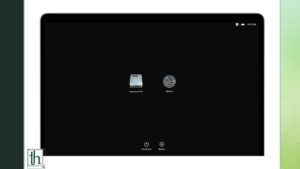If you’re a Mac user, you’re likely familiar with the immediate onslaught of apps when logging into your Mac, a mixed blessing of startup programs. These apps are designed to expedite your workflow by reducing loading times, but can sometimes overload your system with unnecessary resource consumption without offering substantial benefits. However, there is a solution to this problem. In this comprehensive guide, we will delve into modifying Mac startup programs to optimise your workflow and enhance your productivity. Furthermore, we will also discuss their advantages and disadvantages, and provide you with detailed instructions on how to add, remove, or change them according to your needs.
What Exactly Are Startup Programs?
In simple terms, startup programs are applications that kick into action the moment your Mac powers up. These apps are designed to appear on your screen and start functioning immediately after you sign in, with the aim of reducing wait times. Common examples of Mac startup programs include auto-updaters like Microsoft AutoUpdate, game launchers, music streaming apps such as Apple Music, and many more.
Assessing the Pros and Cons of Startup Programs
Startup programs can be regarded as a double-edged sword. While they offer the convenience of instant access to certain apps, they can also place a heavy burden on your Mac during the boot-up process. This strain can lead to slower boot times, increased battery consumption, higher RAM usage, and other performance-related issues. To maintain a stable system, it’s advisable to keep only essential apps in your startup program list.
How to View Already Existing Startup Programs?
If you’re uncertain about which startup programs are currently running on your Mac, follow these steps:
- Click on the Apple logo () located in the top-left corner of your screen and select “System Preferences” from the dropdown menu. Alternatively, you can use the Spotlight search by pressing Command + Space and searching for “System Preferences.”
- Inside the System Preferences window, navigate to the “General” tab on the left-hand side.
- Click on “Login Items.”
This will display a list of the startup programs on your Mac, and you can also edit them here. Scroll down to find apps that have been granted permission to run in the background for tasks such as syncing and software updates.
How to Add, Remove, or Modify Mac Startup Programs?
The following are the five most effective methods for modifying Mac startup programs.
1. Using System Settings
- Perform a Spotlight search by pressing Command + Space and typing “Open at Login,” or follow the procedure mentioned earlier to access the same settings page.
- To remove an app, select the app you want to remove and click the minus button (-) in the bottom-left corner.
- To add an app, click the plus button (+) in the bottom-left corner, choose the desired app from the Applications folder, and click “Open.”
2. From the Dock
- Right-click on the app icon in the dock.
- Hover your cursor over “Options.”
- Select “Open at Login” to enable or disable startup behaviour for that app.
3. Within App Settings
- Open the app for which you want to change the login behaviour.
- Look for startup settings within the app’s menu, which can vary for each application. Adjust the settings according to your preferences.
4. Using Finder
- Open Finder and select “Go” from the menu bar.
- Choose “Go to Folder” (or use the shortcut Command + Shift + G).
- Type “/Library/LaunchAgents” and “/Library/LaunchDaemons” to check for any suspicious programs not located in the Applications folder.
- To remove a program, drag its icon to the trash, right-click, and select “Move to Trash,” or use the shortcut Command + Delete. Authenticate the action using Touch ID or your password if prompted.
5. Using Cleaner Apps
- Mac utility software like CleanMyMac X and MacKeeper often include startup program managers as part of their feature set, simplifying the process of managing startup programs.
Enhance Your Mac’s Speed Without Eliminating Startup Apps
If you prefer to retain your existing startup programs while minimizing their impact on your Mac’s performance, consider these strategies:
- Delay Start: Applications like Delay Start enable you to set a custom time interval before startup programs launch, preventing them from consuming additional resources during boot-up.
- Temporarily Disable Startup Programs: Press the Shift key while signing into your Mac from the lock screen to temporarily deactivate startup programs.
Common Types of Mac Startup Apps
Some of the most frequently encountered categories of Mac startup apps include:
- Cloud storage apps: Dropbox, Google Drive, and iCloud, which facilitate file synchronization across your devices.
- Email and messaging apps: Mail, Messages, and Slack, which ensure you’re instantly connected with friends, family, and colleagues.
- News and weather apps: Apps like The New York Times, BBC News, and Weather Channel keep you updated.
- Anti-malware programs: Essential tools like Avast, Malwarebytes, and Norton, are designed to safeguard your Mac from malware and other threats.
- Other productivity apps: Microsoft Office, Adobe Creative Cloud, Flux, and Evernote, all of which help you accomplish your work tasks efficiently.
In conclusion, startup programs can be both a boon and a burden. You have the power to maximize your Mac’s efficiency by managing them intelligently. You can enhance your Mac experience with the tips by modifying Mac startup programs.
Also Read: Nearby Share Download for MacOS [Guide]










